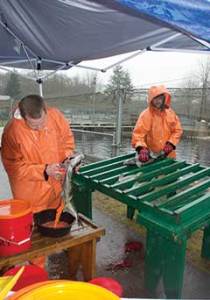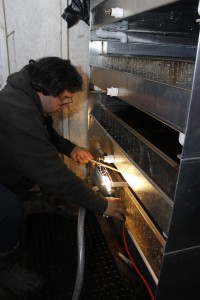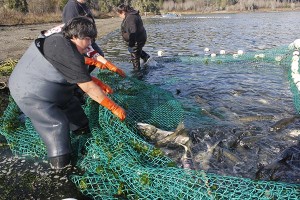By Lorraine Loomis, Chair, Northwest Indian Fisheries Commission
Hood Canal/Eastern Strait of Juan de Fuca summer chum is the only threatened salmon population in western Washington showing clear signs of recovery.
It’s thanks to a 20-year cooperative effort by state and tribal salmon co-managers, conservation groups, local governments and federal agencies that is balancing the key ingredients needed for recovery: harvest, hatcheries and habitat.
Summer chum were listed as threatened under the Endangered Species Act in 1999 along with Puget Sound chinook and Lake Ozette sockeye. Puget Sound steelhead joined the list in 2007.
The program’s success comes from a core principle that salmon recovery must address all factors affecting natural production. For far too long the federal government’s main response to protect ESA-listed salmon has been to cut harvest. Meanwhile, the primary threat to wild salmon and their recovery – ongoing loss and damage of their habitat – continues to be ignored.
Past overharvest and poor ocean conditions combined with degraded habitat to spark the steep decline of summer chum that began in Hood Canal streams in the late ’70s. By the early 1990s, fewer than a thousand summer chum were returning from a population that once numbered 70,000 or more.
The tribal and state co-managers responded with strong harvest management actions beginning in 1992. Fisheries impacting summer chum were reduced, relocated and delayed to protect the returning fish.
But it didn’t stop there. Working with federal agencies and conservation groups, tribal and state salmon co-managers began hatchery supplementation programs to boost populations of summer chum.
A portion of the wild run returning to the Big Quilcene River was moved to a federal fish hatchery and spawned, with the offspring released to rebuild the remaining run. Four years later, about 10,000 adult summer chum returned to the river.
Since then, additional hatchery supplementation efforts have led to summer chum becoming re-established in most of its historic range. To protect summer chum genetics, supplementation programs were limited to three generations, or 12 years. Some programs met their goals and were ended earlier.
Habitat protection and restoration was the third key to bringing back summer chum. Projects such as dike removals, protecting and restoring instream habitat, planting streamside trees and removing invasive plants have all contributed to the effort’s success. Nearly 700 acres of estuary and an equal amount of upland stream habitat have been improved to support the recovery effort.
More work is planned and ongoing in streams, estuaries, and the nearshore throughout the area
Balancing harvest, hatcheries and habitat is the key to salmon recovery. Equally as important is the need for monitoring and evaluation to apply lessons learned and improve effectiveness.
Cooperation is the third essential ingredient. Only by working together can we hope to meet the challenges of salmon recovery. If we are ever going to recover Puget Sound chinook and steelhead, we will need to use the same approach we are using to save Hood Canal summer chum.
Despite the best efforts of fisheries managers to restore summer chum, they remain vulnerable to climate change and ongoing development. Because they arrive in streams to spawn during the late summer months, they are especially threatened by low flows like those we are seeing during this year’s record-breaking drought, which is far from over.
Ongoing loss of habitat and a number of other factors still must be fully addressed before summer chum can be removed from the ESA list. There’s still a ways to go, but at least we are on the right path.
How will we know when we have recovered summer chum? When they are once again abundant enough to support sustainable harvest. To the tribes, that is the true measure of salmon recovery and the commitment to fulfill the promises of the treaties we signed with the U.S. government.






